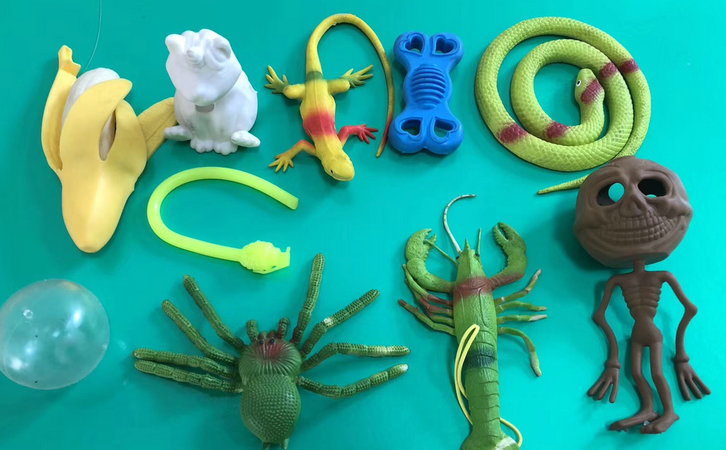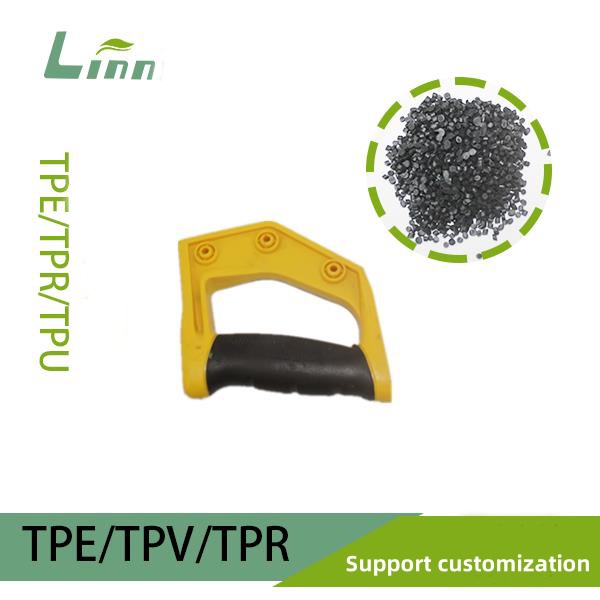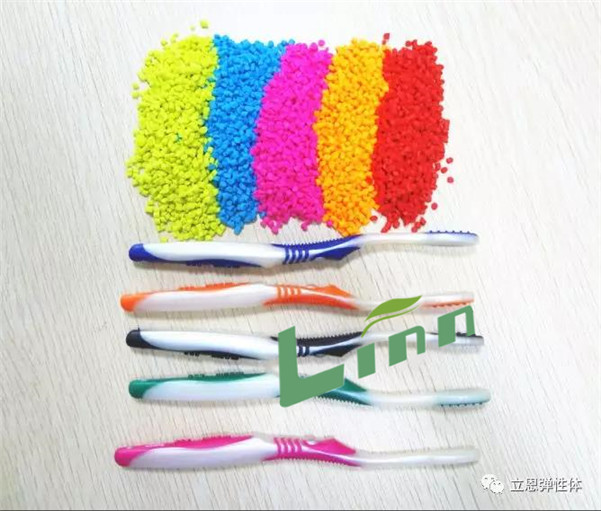After spending more than 15 years working with thermoplastic elastomers (TPE) in industries ranging from automotive to consumer goods, I’ve seen just about every manufacturing hiccup you can imagine. One issue that keeps cropping up, no matter the application, is delamination and peeling during the TPE molding process. Whether it’s a soft-touch grip on a toothbrush or a seal on a car door, seeing layers separate or surfaces flake off can be a nightmare for manufacturers. It’s not just a cosmetic flaw—it can lead to product failures, costly rejections, and frustrated customers. Based on my hands-on experience troubleshooting production lines and collaborating with material scientists, I’ll walk you through the main reasons why delamination and peeling happen in TPE molding and share practical solutions to get your products back on track.

Why Delamination and Peeling Are a Big Deal
Before we dig into the causes, let’s talk about why delamination and peeling matter. TPEs, prized for their rubber-like flexibility and plastic-like processability, are often used in injection molding or overmolding to create durable, soft-touch components. When layers separate or the surface peels, it compromises the product’s functionality, aesthetics, and longevity. I once worked with a client producing TPE-coated medical device handles where peeling led to a recall, costing them tens of thousands in losses and damaging their reputation. Identifying and addressing the root causes is critical to ensuring consistent quality and keeping your production line running smoothly.
Key Causes of Delamination and Peeling in TPE Molding
Delamination and peeling in TPE molding can stem from material issues, processing errors, mold design, or environmental factors. Below, I’ll break down the most common culprits I’ve encountered in my career, along with real-world examples and actionable fixes.
1. Material Incompatibility in Overmolding
When TPE is overmolded onto a substrate like ABS, PP, or PC, material incompatibility is a leading cause of delamination. TPEs, such as SEBS or TPU, need to form a strong chemical or mechanical bond with the substrate for adhesion.
Why It Happens: TPEs and substrates like ABS have different polarities. For example, SEBS-based TPEs are non-polar, while ABS is polar, leading to weak intermolecular bonding. I once helped a factory producing TPE-overmolded tool grips where the TPE peeled off because they used a generic SEBS grade not designed for ABS adhesion. Another issue is mismatched melt flow indices (MFI), where the TPE flows too differently from the substrate, preventing proper fusion.
Solutions: Select a TPE grade specifically formulated for your substrate, such as an overmolding-grade SEBS with polar additives for ABS or PC. Check the technical data sheet (TDS) for adhesion properties and conduct peel strength tests (e.g., ASTM D903) before production. If compatibility remains an issue, apply a heat-resistant primer or adhesive interlayer (e.g., polyurethane-based, 10–20 µm thick) to enhance bonding. Always consult your material supplier for recommendations tailored to your substrate.

2. Improper Processing Parameters
The injection molding process is a delicate balance, and incorrect parameters can lead to delamination or peeling by preventing proper material fusion or causing internal stresses.
Why It Happens:
Low Melt Temperature: If the TPE melt temperature is too low (e.g., below 180°C for SEBS-based TPE), it may not fully melt or bond with the substrate, leading to weak adhesion. I saw this in a plant making TPE seals, where raising the melt temperature from 175°C to 195°C eliminated peeling.
High Injection Speed: Excessive speed (e.g., >100 mm/s) can cause shear stress or turbulent flow, resulting in delamination or surface peeling. This was an issue for a client producing TPE phone cases, where slowing the injection speed fixed the problem.
Rapid Cooling: Fast cooling (e.g., <10 seconds) can trap stresses at the TPE-substrate interface, causing layers to separate over time.
Solutions: Optimize melt temperature (180–220°C for most TPEs), injection pressure (80–120 MPa), and mold temperature (40–60°C for substrates like ABS). Use a slow cooling rate (15–20 seconds) to allow molecular interdiffusion. Run test shots and adjust parameters incrementally, monitoring for peeling or layer separation.
3. Poor Surface Preparation of the Substrate
The condition of the substrate surface is critical for TPE adhesion. A poorly prepared surface can prevent proper bonding, leading to delamination.
Why It Happens: Contaminants like mold release agents, oils, or dust on the substrate (e.g., ABS or PP) create a barrier that weakens TPE adhesion. I worked with a manufacturer of TPE-coated automotive parts where residual mold release caused peeling during quality checks. Additionally, a smooth substrate surface may lack the roughness needed for mechanical interlocking.
Solutions: Clean the substrate with isopropyl alcohol (IPA) or a degreaser to remove contaminants. For better mechanical bonding, lightly sand (e.g., 400-grit sandpaper) or use plasma treatment to increase surface energy (target 44–48 mN/m). Store substrates in a clean, dust-free environment before molding to avoid recontamination.
4. Mold Design and Maintenance Issues
The mold itself can contribute to delamination if it’s not designed or maintained properly.
Why It Happens:
Small Gates or Runners: Narrow gates (e.g., <1 mm) or runners can cause uneven TPE flow, leading to weak bonding or surface peeling. I once troubleshooted a TPE grip project where enlarging the gate from 0.8 mm to 1.5 mm resolved delamination.
Mold Contamination: Residual material or mold release in the mold can transfer to the substrate, weakening adhesion.
Poor Venting: Trapped air in the mold can cause burn marks or incomplete bonding, leading to peeling. This was an issue in a factory producing TPE shoe soles, where adding exhaust slots fixed the problem.
Solutions: Use larger gate sizes (1.5–2 mm) and ensure runners are wide enough for smooth flow. Clean molds with acetone or a solvent to remove residues. Add exhaust vents (0.02–0.05 mm deep) to release trapped air. Regularly inspect molds for wear and polish to a high finish (e.g., SPI A-2) to prevent surface defects.
|
Cause |
Symptom |
Solution |
Typical Fix |
|---|---|---|---|
|
Material Incompatibility |
Delamination at interface |
Use overmolding-grade TPE, apply primer |
SEBS for ABS, peel tests |
|
Improper Parameters |
Weak bonding, surface peeling |
Optimize temperature, slow cooling |
180–220°C, 15–20s cooling |
|
Poor Surface Preparation |
Peeling due to contaminants |
Clean with IPA, plasma treatment |
Surface energy >44 mN/m |
5. Moisture in TPE or Substrate
Moisture content in TPE or the substrate can cause delamination by creating voids or weak interfaces during molding.
Why It Happens: TPEs (e.g., SEBS, TPU) and substrates like ABS are hygroscopic, absorbing moisture from the air. During molding, moisture vaporizes, forming bubbles or splay that weaken the bond. I recall a client whose TPE-coated ABS parts delaminated due to undried TPE pellets stored in a humid warehouse, causing visible splay marks.
Solutions: Dry TPE at 80°C for 2–4 hours and ABS at 80–90°C for 3–4 hours using a dehumidifying dryer. Store materials in sealed containers with desiccant packs in a low-humidity environment (<50%). Check for splay or bubbles during test shots, as these indicate residual moisture.

6. Thermal Degradation of Materials
Thermal degradation occurs when TPE or the substrate is exposed to excessive heat, weakening the material and causing peeling or delamination.
Why It Happens: TPEs have a narrow processing window (typically 180–220°C). Overheating (e.g., >230°C) can degrade the polymer or additives, leading to a brittle interface or surface peeling. I once helped a factory fix peeling TPE seals by identifying a faulty heating ring that pushed temperatures to 240°C, causing degradation.
Solutions: Monitor barrel and nozzle temperatures to stay within the recommended range. Use TPEs with high thermal stability and add heat stabilizers if necessary. Inspect for signs of degradation like coking, gas spots, or yellowish discoloration, which indicate overheating. Regularly calibrate heating elements to prevent malfunctions.
7. Residual Stresses and Shrinkage
Residual stresses or differential shrinkage between TPE and the substrate can cause delamination over time, especially under mechanical or environmental stress.
Why It Happens: TPE and substrates like ABS have different shrinkage rates (TPE: 1–3%, ABS: 0.4–0.9%). Rapid cooling or high injection pressure can lock in stresses, leading to layer separation. I worked with a client producing TPE-overmolded buttons where rapid cooling caused stresses that led to peeling after a few weeks.
Solutions: Use a slow cooling rate (15–20 seconds) to minimize stresses. Adjust injection pressure (80–120 MPa) to avoid overpacking. Select TPE and substrate grades with similar shrinkage rates to reduce differential stress. Conduct accelerated aging tests (e.g., ASTM D4329) to ensure long-term stability.
8. Environmental and Post-Processing Factors
Environmental exposure or post-processing treatments can weaken the TPE-substrate bond, leading to delayed delamination or peeling.
Why It Happens: UV light, humidity, or chemical exposure can degrade the TPE or interface, causing peeling over time. I once consulted for a manufacturer of outdoor TPE-coated equipment where UV exposure caused the TPE to peel after six months. Aggressive post-processing, like ultrasonic cleaning with harsh solvents, can also weaken bonds.
Solutions: Add UV stabilizers or antioxidants to the TPE formulation to enhance environmental resistance. Store finished products in a controlled environment (15–25°C, <50% humidity). Avoid harsh post-processing methods and test products under simulated conditions (e.g., UV exposure per ASTM G154) to ensure durability.
Real-World Insights: Lessons from the Field
One memorable project involved a client making TPE-overmolded ABS tool handles. The TPE peeled off during quality testing, and we traced the issue to a combination of a non-compatible TPE grade and moisture in the ABS substrate. Switching to an ABS-specific SEBS grade and implementing a drying protocol (80°C for 3 hours) solved the problem, improving peel strength by 70%. The client avoided scrapping a $12,000 batch and met their delivery deadline.
Another time, a factory producing TPE shoe soles faced delamination due to small gates and rapid cooling. By enlarging the gates to 1.8 mm and extending the cooling time to 18 seconds, we eliminated the issue, saving thousands in rework costs. These cases highlight the need to tackle both material and process factors systematically.

Practical Steps to Prevent Delamination and Peeling
Here’s a step-by-step approach based on my experience to ensure strong TPE molding:
Choose Compatible Materials: Select a TPE grade designed for your substrate and verify adhesion with peel tests.
Optimize Processing Parameters: Set melt temperature (180–220°C), injection pressure (80–120 MPa), and mold temperature (40–60°C). Use slow cooling to reduce stresses.
Prepare the Substrate: Clean with IPA and consider plasma treatment for enhanced adhesion.
Improve Mold Design: Use larger gates, add exhaust vents, and clean molds regularly to prevent contamination.
Dry Materials Thoroughly: Dry TPE and substrate to eliminate moisture-related defects.
Prevent Thermal Degradation: Monitor temperatures and use heat-stabilized materials.
Test for Environmental Stability: Conduct UV, humidity, or chemical exposure tests to ensure long-term adhesion.
|
Cause |
Symptom |
Solution |
Prevention Tip |
|---|---|---|---|
|
Material Incompatibility |
Delamination at interface |
Use overmolding-grade TPE, primer |
Verify TDS, peel tests |
|
Poor Mold Design |
Uneven flow, weak bonding |
Enlarge gates, add vents |
1.5–2 mm gates, clean molds |
|
Moisture in Materials |
Bubbles, splay, weak bond |
Dry TPE and substrate |
80°C for 2–4 hours |
Cost Implications and ROI
Delamination and peeling can lead to significant losses, with scrapped batches costing $1,000–$20,000 depending on production scale. Investing in compatible materials, proper drying equipment, and operator training can prevent these issues. For example, one client reduced reject rates by 80% after optimizing mold design and drying protocols, recouping their investment in new materials within two months. Regular maintenance and testing also minimize downtime and ensure consistent quality.
Future Trends in TPE Molding
The TPE industry is evolving, with advanced adhesion promoters reducing the need for primers and in-line monitoring systems detecting parameter deviations in real-time. Automated plasma treatment is also gaining traction, ensuring consistent substrate preparation. Staying ahead of these trends can help manufacturers achieve better bonding and fewer defects.
Final Thoughts
Delamination and peeling in TPE molding can be frustrating, but they’re manageable with the right approach. By addressing material compatibility, processing parameters, substrate preparation, mold design, moisture, thermal degradation, residual stresses, and environmental factors, you can produce high-quality, durable TPE products. My years in the field have taught me that a combination of careful material selection, optimized processes, and rigorous testing is the key to success. Whether you’re molding grips, seals, or soles, these strategies will help you avoid costly defects and deliver products that perform as promised.

Frequently Asked Questions
Q: How can I test if my TPE is bonding well to the substrate?
A: Conduct peel strength tests (e.g., ASTM D903) on sample parts. A strong bond should resist peeling under 10–15 N/cm of force, depending on the application.
Q: Can I fix delamination without changing my TPE grade?
A: Yes, by cleaning the substrate, optimizing molding parameters (e.g., higher melt temperature, slower cooling), or using a primer. However, a compatible TPE grade is often the most reliable solution.
Q: Why does delamination appear weeks after molding?
A: Residual stresses or environmental exposure (e.g., UV, humidity) can weaken the bond over time. Use slow cooling and add UV stabilizers to the TPE formulation.
Q: How important is drying TPE and substrate materials?
A: Extremely important. Moisture can cause bubbles or splay, weakening adhesion. Dry TPE at 80°C for 2–4 hours and ABS at 80–90°C for 3–4 hours before molding.
Q: Can mold design really cause peeling?
A: Yes. Small gates, poor venting, or contaminated molds can lead to uneven flow or weak bonding. Enlarge gates, add vents, and clean molds regularly to prevent issues.





